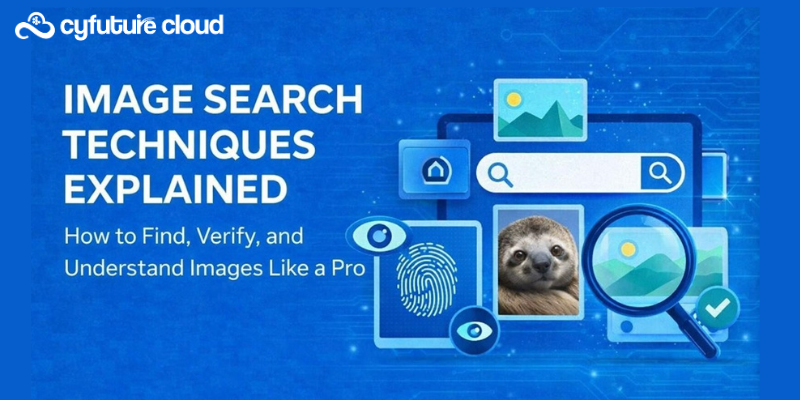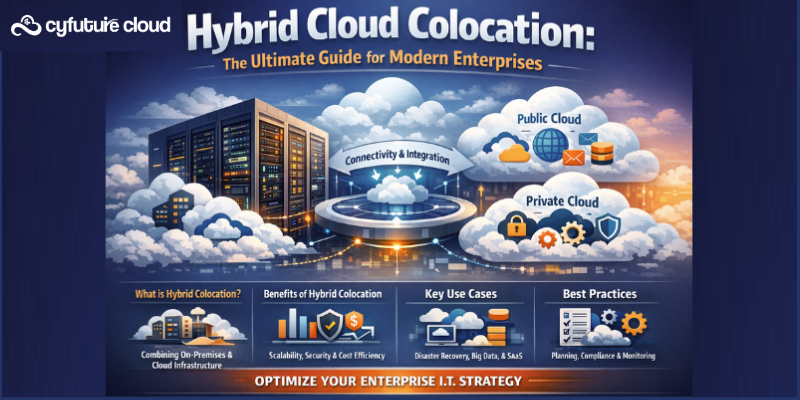Table of Contents
- Key DevOps trends that are shaping the industry for 2023
- 1. GitOps: A new approach to optimizing DevOps practices
- 2. AIOps/MLOps: Automating IT operations and processes
- 3. DevSecOps: DevOps implementation of observability, security, and governance
- 4. FinOps: Increasing financial accountability to optimise cloud spending
- 5. DataOps: Accelerating development by optimizing data pipelines
- 6. Hybrid deployment: Lowering infrastructure costs and shortening time-to-market
- 7. Automation: Enabling a continuous feedback loop between diverse teams.
- 8. Infrastructure as a Code (IaC): Enabling quick deployment by removing human processes.
- Conclusion
DevOps has emerged as a leading delivery model for building solutions quickly and efficiently in the modern digital landscape.
According to the recent study of the PR Newswire, the DevOps business is foreseen to develop considerably in the future years. The global market of DevOps is counted on to thrive from $7.20 to $8.95 billion in 2022, signifying a CAGR of 24.24%. Moreover, the market is predicted to reach $20.53 billion by 2026 at a CAGR of 23.08%.
The contribution of DevOps to digital transformation is abundantly clear and is set to bring about remarkable transformation across various industries.
DevOps stands out as the most popular among the current technology trends due to its reliable track record of improving uptime, output, and team collaboration.
Undoubtedly, for the upcoming generation, the adoption of DevOps is one of the remarkable trends. Over time, it has become increasingly clear that DevOps is establishing itself as a highly effective Agile framework, thanks to its ability to promote agility, innovation, and collaboration in organizations.
Big organizations frequently implement the DevOps methodology to improve operational effectiveness and achieve quicker results. In today’s swift business environment, modern businesses are characterized by a keen awareness of the latest tools and technologies to help organizations modernize and succeed.
With the continuous growth in the popularity of DevOps, its adoption is counted on to expand across several industries, enclosing everything from containerization to automated pipelines.
In this blog, we’ll explore some recent developments of DevOps in 2023 and how they can help organizations thrive if implemented correctly.
So, let’s get started!
Key DevOps trends that are shaping the industry for 2023
1. GitOps: A new approach to optimizing DevOps practices
GitOps is a recent innovation of DevOps that has been brought into the DevOps process. It helps in the automation and control of infrastructure. A Kubernetes-based paradigm allows developers and IT operations managers to use Git for application merging and deployment.
GitOps incorporates all DevOps best practices, including collaboration, version control, compliance, and continuous integration/continuous delivery, and applies them to infrastructure automation. Additionally, it focuses on incremental releases and continuous delivery to promptly and efficiently build, test, and deploy software.
By implementing GitOps, Mettle, a Natwest-powered financial service, enhanced the production speed by 75% and deployment speed by 25%. Its assurance is to give small business customers an application that facilitates payments and assists them in managing their money.
As a result, it was necessary to guarantee that all services were available round-the-clock. The engineering team needed help to design a way to swiftly deliver new features without risking the reliability or security of CI/CD pipelines.
That’s when Mettle collaborated with Weaveworks and embraced a GitOps strategy. It enabled Mettle to develop a self-service platform for engineers to focus on providing business value via innovation without the requirement for Platform Team help, resulting in a 50% rise in production and a 25% acceleration in deployment. They also reduced the MTTR to 20 minutes and the operational involvement of developers by 75%.
2. AIOps/MLOps: Automating IT operations and processes
Organizations store massive amounts of data. As a result, AI and machine learning solutions can help DevOps release procedures. Artificial Intelligence for IT operations and Machine Learning operations are two DevOps developments, with a $644 billion market size forecast by 2030.
Teams always strive to improve their procedures to achieve rapid delivery while maintaining good quality.
While AIOps may assist you in automating IT operations and procedures, MLOps standardizes the creation of ML systems. As a result, AIOps enables system administrators to pinpoint the source of issues impeding productivity and efficiency. MLOps also helps to simplify operations and boost efficiency.
In the future, many current DevOps tools will be improved with AIOps and MLOps features. Companies are already using AIOps and MLOps using solutions such as AppDynamics, Splunk Enterprise, Datadog, New Relic, and others. This industry is expected to increase.
3. DevSecOps: DevOps implementation of observability, security, and governance
Enterprises have embraced the DevSecOps lifecycle to enhance security, one of the most pressing challenges in the digital age. It has simplified both accountability and observability.
The core principle of DevSecOps is that security should be included in software development as early as possible rather than later. More than 40% of Enterprises run DAST tests, 50% run SAST tests, and the remaining 20% scan dependencies and containers, according to current DevSecOps trends.
Some of the most effective application development, deployment, and operations practices must be made more accessible. DevSecOps is an improved version of DevOps that emphasizes security and observability. It promotes the seamless running of development and operations teams and attempts to secure firm operations from outside invasions.
4. FinOps: Increasing financial accountability to optimise cloud spending
FinOps is a DevOps industry concept defining best practices for optimizing cloud spending to boost tight profit margins. It adds financial accountability to cloud spending by cooperating with diverse teams to balance speed, cost, and quality. In 2022, 43% of CTOs, 24% of CIOs, and 17% of CFOs communicate with the FinOps team in an enterprise-level company.
The Wire is a well-known media organization that relies on AWS for its infrastructure needs. It provided them with outstanding performance, dependability, scalability, and security, but at a significant cost. Furthermore, they needed more control over cloud spending; there was significant resource waste and mismanagement of cloud infrastructure. The Wire cut its cloud computing costs by 80% by implementing FinOps. The Wire cooperated with Centilytics and used their FinOps solution at this point.
The solution investigated The Wire’s cloud architecture, resource use, and utilization in-depth and generated tailored reports for improvement. It also used the wastage tracker to discover many orphaned resources. Consequently, they saved 80% on AWS cloud computing instances, 25% on EC2, 30% on RDS, and 15% on cloud infrastructure expenditures.
5. DataOps: Accelerating development by optimizing data pipelines
DataOps is a set of technology practices, cultural norms, procedures, and architectural patterns to increase release speed, collaboration, data quality, and monitoring. All of these are important DevOps elements. Therefore, it’s no surprise that 89% of businesses will use DataOps in the next few years.
People, procedures, and technology are all aligned in DataOps to allow agile and safe data management. DevOps and DataOps both expedite development, while DevOps focuses on delivery and DataOps on data pipeline integration.
By implementing DataOps, Gogo enhanced service quality while lowering operating costs.
Gogo is a prominent in-flight connectivity and entertainment provider to over 16 airlines. Over 2900 commercial planes have connection equipment installed. Because there was no centralized repository for this data collection, analyzing data and identifying insights took a lot of work.
As a result, Gogo joined forces with N-iX to build a unified DataOps platform. It aided Gogo in analyzing performance trends that enhanced service quality. It also cuts operational costs while improving network quality.
6. Hybrid deployment: Lowering infrastructure costs and shortening time-to-market
Hybrid deployment combines the power of on-premise infrastructure with cloud computing resources. The significant benefit of this approach is that you don’t have to worry about full-fledged cloud migration; you need to augment on-premise resources and create an alternate path to the cloud provider. In addition, collaboration is the heart and soul of DevOps, and the hybrid approach will allow team members working in-house and remotely to work together.
7. Automation: Enabling a continuous feedback loop between diverse teams.
DevOps automation attempts to automate repetitive processes with little manual involvement and to design procedures that allow for a feedback loop between the operations and development teams. You may use this strategy to do incremental deployments and assure speedier releases. As a result, automated processes are expected to be chosen by 90% of organizations that have implemented DevOps. Furthermore, predictive analysis is employed in DevOps processes to detect and cure issues.
8. Infrastructure as a Code (IaC): Enabling quick deployment by removing human processes.
Infrastructure as a Code (IaC) is a DevOps market trend that automates infrastructure management and provisioning using code rather than human methods. Infrastructure standardization, consistent deployment, and speedy implementation are some of the main benefits of IaC. You can align development and operations teams using IaC because both will use the same description for application deployment.
Conclusion
The DevOps methodology has evolved dramatically in recent years. It is projected to grow as more firms include it in their workforce. With more DevOps tendencies emerging to boost operational efficiency, it is becoming increasingly likely that it will eventually go beyond automation.
Rising DevOps tendencies are increasingly concerned with the framework’s continuous improvement to improve user results. Logically, the DevOps shift is underway.
With companies increasingly relying on the DevOps approach, having a thorough grasp of it is essential. If you need clarification about which DevOps technology to utilize or which architecture to deploy, contact Cyfuture Cloud.
Recent Post
Send this to a friend

 Server
Colocation
Server
Colocation CDN
Network
CDN
Network Linux
Cloud Hosting
Linux
Cloud Hosting Kubernetes
Kubernetes Pricing
Calculator
Pricing
Calculator
 Power
Power
 Utilities
Utilities VMware
Private Cloud
VMware
Private Cloud VMware
on AWS
VMware
on AWS VMware
on Azure
VMware
on Azure Service
Level Agreement
Service
Level Agreement 



















